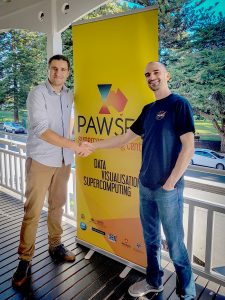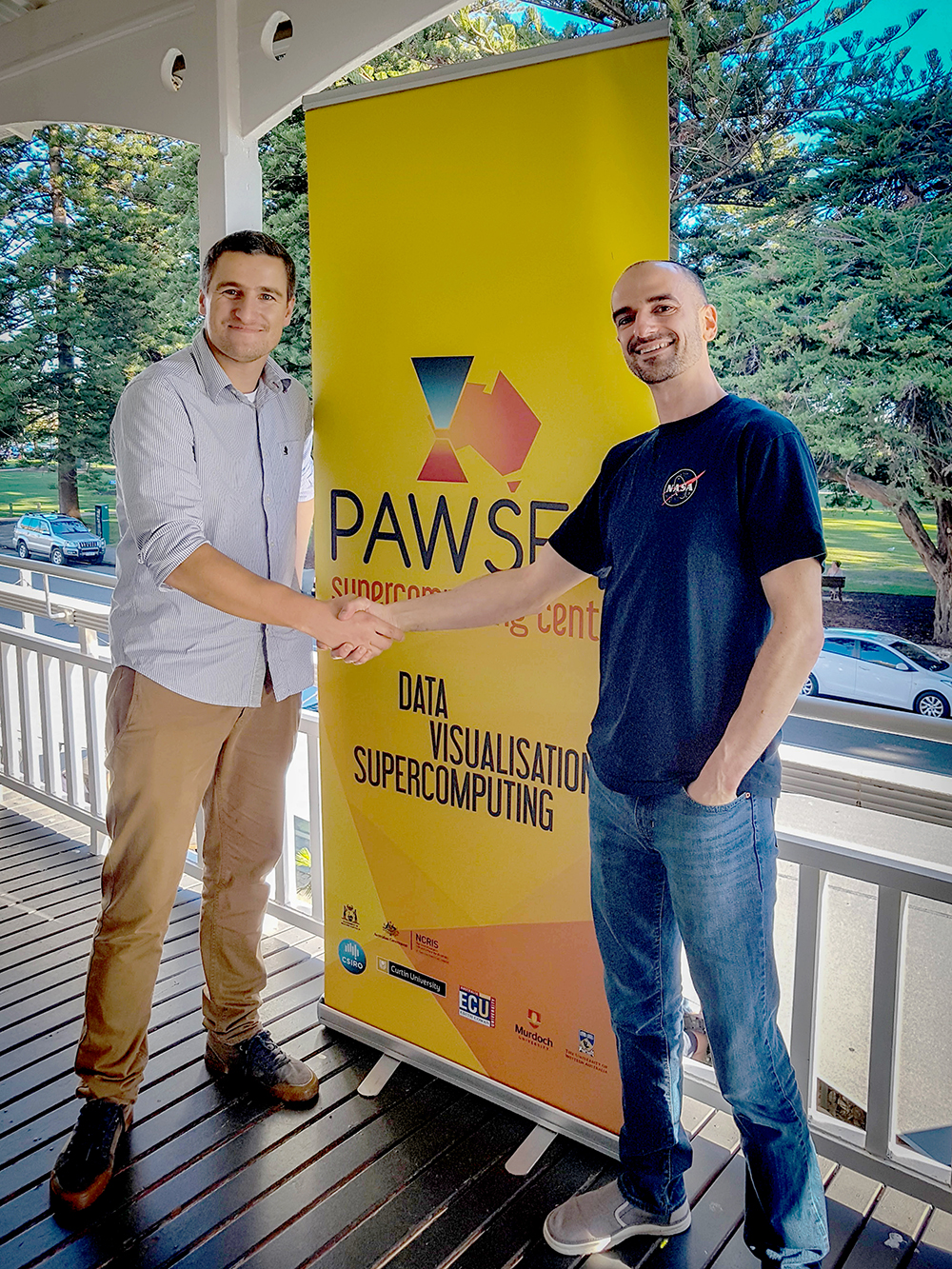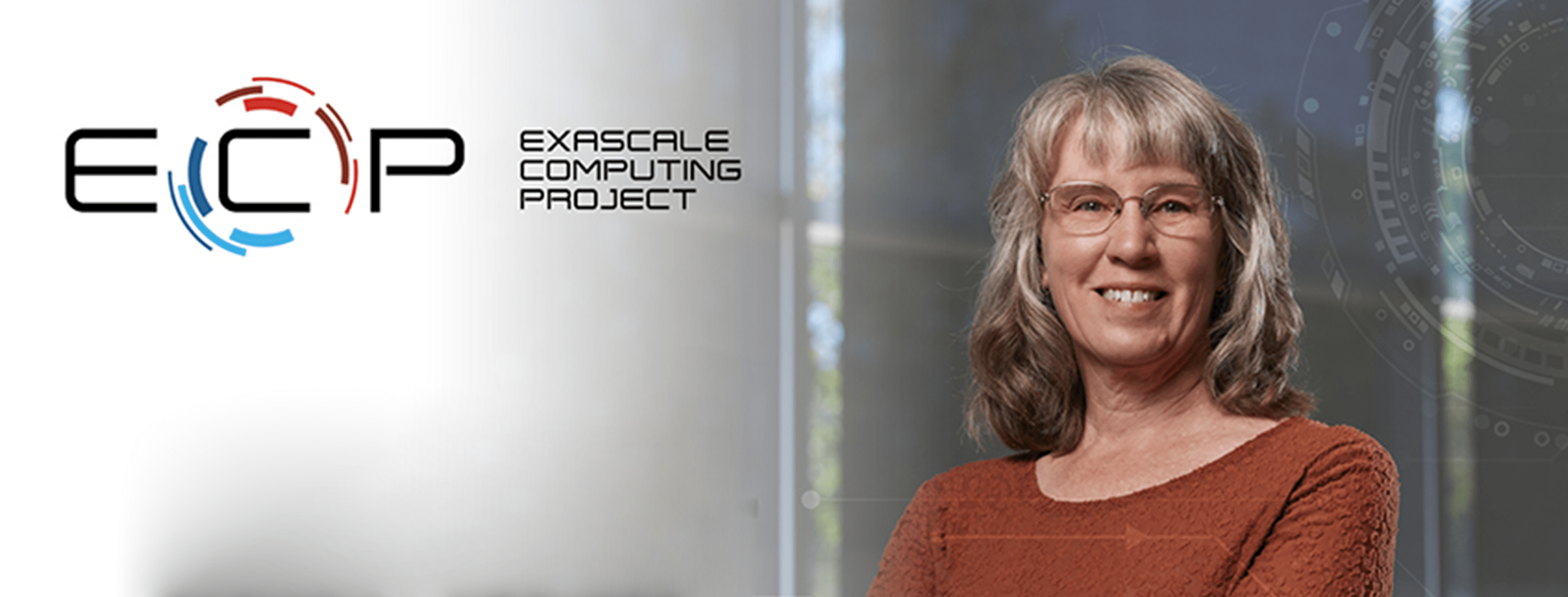
Teams of developers and mentors recently accelerated their codes at Australia’s first OLCF GPU hackathon. Event organizers included Maciej Cytowski (left) and Tom Papatheodore (right), HPC specialists at Pawsey and the OLCF, respectively.
Six teams from around the world recently convened in Australia for the country’s inaugural OLCF GPU hackathon, organized by the Pawsey Supercomputing Centre. Throughout the 5-day event, high-performance computing (HPC) experts helped participants adapt their applications for GPU architectures.
From April 16 to 20, programmers either ported their codes to GPUs for the first time or optimized the performance of applications already running on GPUs. Each team consisted of three to five developers intimately familiar with their own code and two mentors who provided guidance throughout the week. Teams ran their codes on a Pawsey HPC system called Athena.
“The developers attended because they wanted to improve their codes, and the mentors shared their extensive GPU programming experience to help participants achieve that goal,” said Tom Papatheodore, an HPC programmer and user support specialist at the Oak Ridge Leadership Computing Facility (OLCF), a US Department of Energy (DOE) Office of Science User Facility located at DOE’s Oak Ridge National Laboratory (ORNL).
ORNL collaborated with NVIDIA Corporation and Pawsey to facilitate the event, which the US Consul General in Perth, Rachel Cooke, attended along with other representatives from the US Consulate. Key event organizers included Papatheodore, Pawsey HPC specialist Maciej Cytowski, and Pawsey Acting Executive Director Ugo Varetto.
“US research laboratories and American companies understand the unique opportunities that the Pawsey Centre provides through its work with the Square Kilometer Array telescope and other big data projects,” Cooke said. “Through events like this hackathon, our two countries can work together to solve problems requiring large data processing in fields such as astronomy, medicine, and quantum [physics].”
GPUs provide exceptional levels of memory and performance for useful applications in these fields and many others, so learning to program for them can lead to more efficient codes that require less time for data processing. Helping teams achieve this goal, or at least providing a path to do so, is the ultimate objective of each installment in the OLCF’s hackathon series.
“The hackathon was successful because there were people who got their codes running on GPUs for the first time, there were people who were able to optimize their codes, and there were other success stories across the board,” Papatheodore said.
For example, some teams profiled their codes for the first time during the event. The program analysis process known as profiling identifies the functions where the application spends most of its time, which helps developers determine how to speed up their code. Profiling resources available at the hackathon included ARM tools, the Score-P measurement infrastructure, and the Vampir performance monitoring tool.
“Developers should first run their codes through these profilers to better understand where they should focus their efforts,” Papatheodore said. “By focusing on the parts of the code that take the longest percentage of the runtime, developers can potentially obtain the biggest speedups.”
Other teams had codes already running on GPUs and focused on optimizing performance, including researchers from the University of Melbourne representing HiPSTAR, a computational fluid dynamics code designed to solve problems related to carbon capture technology and turbulent flows in gas turbines. With the help of Pawsey’s HPC resources and guidance from mentors, they successfully sped up their code to achieve even greater efficiency. Having previously run HiPSTAR on Titan, the OLCF’s 27-petaflop supercomputer, they hope to simulate even more realistic frameworks on the new Summit system.
Because Pawsey had not hosted a hackathon before, Papatheodore’s expertise helped ensure that the experience was productive and beneficial. He disseminated information, led discussions, and coordinated sessions where teams presented their progress, both to share breakthroughs and to brainstorm solutions to problems.
“The event not only gave Pawsey the opportunity to make connections with people from other centers and vendors but also potentially helped inform the GPU development for their machines,” Papatheodore said. “Meanwhile, the OLCF also benefited from collaborating with other groups and informing potential users about our resources and capabilities.”
After growing their global network, learning about GPU technology, and practicing new HPC techniques, the teams left with knowledge and tools to solve challenging problems. Australian participants represented Curtin University, Queensland University of Technology, University of Melbourne, Swinburne University, the Commonwealth Scientific and Industrial Research Organisation (CSIRO), and the International Centre for Radio Astronomy Research. Other attendees were affiliated with ETH Zurich and the Joint Institute for Very Long Baseline Interferometry and European Research Infrastructure Consortium.
The event was possible because of contributions from ORNL, NVIDIA, CSIRO, ARM, PGI (a supplier of software compilers and tools for parallel computing), and the OpenACC organization.
“Collaboration between industry, government, and researchers and also between nations who are leading HPC is extraordinary,” Varetto said. “Even more unique is the opportunity to contribute, build, and create a community for the benefit of Australian and global science.”
The OLCF partnered with other facilities throughout 2017 to organize similar hackathons at various locations. More than 300 individuals from universities, national laboratories, supercomputing centers, government institutions, and industry attended these events. Previous hackathon participants often continue to develop applications for GPUs, and some become OLCF users to conduct additional research.
This year, four more GPU hackathons are scheduled to take place at the National Center for Supercomputing Applications, Brookhaven National Laboratory, the Swiss National Supercomputing Centre, and the OLCF.
Read more about this event in a feature from the US Embassy and Consulates in Australia: https://au.usembassy.gov/international-gpu-hackathon-officially-launched-in-perth/.
ORNL is managed by UT-Battelle for the Department of Energy’s Office of Science, the single largest supporter of basic research in the physical sciences in the United States. DOE’s Office of Science is working to address some of the most pressing challenges of our time. For more information, please visit https://science.energy.gov.






